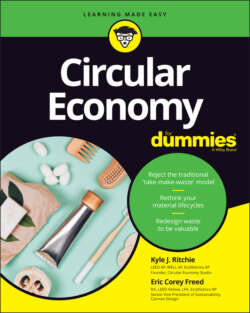Читать книгу Circular Economy For Dummies - Eric Corey Freed - Страница 30
Making technical materials circular
ОглавлениеTechnical materials are those that cannot be grown. Metals, plastics, and other finite materials are in limited supply and must be managed accordingly. To keep technical materials in use for longer periods, we humans need to harness new strategies. Although recycling technical materials is better than disposing of them, recycling should be seen as a last resort when considering circular materials management. Sharing, reusing, repairing, and remanufacturing products are all resource management strategies that should be employed before recycling.
One major issue in making technical materials circular is that the current products we use aren’t often designed to allow for sharing, reuse, repair, or remanufacturing. The innate capability of products to do all those things will need to be designed into the product itself. Unless this happens, it’s quite challenging to support a circular lifecycle, and recycling becomes the only option. For circular lifecycles to become a reality when it comes to technical materials, a proper support infrastructure needs to be in place to allow for sharing, reuse, repair, and remanufacturing to take place. Look around the room and find something made of technical materials. If the item stopped working right now, would you easily be able to have it repaired? Or would it be easier to simply throw it away and buy a new one? This reality also supports the notion that consumers must have an incentive to support a circular economy, because they have the incentive now to support a linear economy by way of low prices and convenience.
